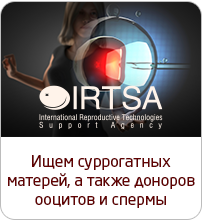Missing Instrument To Help Sperm And Eggs Develop Exactly 23 Chromosomes Each is Found
Researchers at the University of California have discovered a key tool that helps sperm and eggs develop exactly 23 chromosomes each. The work, which could lead to insights into fertility, spontaneous miscarriages, cancer and developmental disorders, is published April 13 in the journal Cell.
Healthy humans have 46 chromosomes, 23 from the sperm and 23 from the egg. An embryo with the wrong number of chromosomes is usually miscarried, or develops disorders such as Down's syndrome, which is caused by an extra copy of chromosome 21.
During meiosis, the cell division process that creates sperm and eggs, matching chromosomes pair up and become connected by "crossing over" with each other, said the professor of microbiology and senior author of the new study.
These connections are essential for precise chromosome sorting and the formation of sperm and eggs with exactly the right numbers of chromosomes. Crossovers also play a fundamental role in evolution by allowing the chromosomes to swap chunks of DNA, introducing some variety into the next generation.
Each pair of chromosomes must contain at least one crossover. But there shouldn't be more than about two crossovers per pair, or the genome could be destabilized.
In their paper, researchers describe a "missing tool" that explains how crossovers are regulated.
"There must be enzymes that ensure at least one crossover, but not too many," said the professor.
He and graduate students looked for enzymes that could cut DNA to form crossovers in yeast, which form sexual gametes, or spores, in much the same way that humans and other mammals form sperm and eggs.
"There were several good candidates, but none turned out to play a major role".
Then they discovered the missing tool for crossing-over: three yeast enzymes, Mlh1, Mlh3 and Sgs1, which work together to cut DNA and make crossovers.
It turns out that the human equivalents of these enzymes are well known for their role in suppressing tumors. Human MLH1 and MLH3 are mutated in an inherited form of colon cancer. BLM, the human equivalent of Sgs1, is mutated in a cancer-prone disease called Bloom's Syndrome.
"Sgs1 was the biggest surprise," they said. "We previously knew it as an enzyme that unwinds DNA to prevent crossovers. Its role in making crossovers had been hidden by other enzymes that can step in when it is absent."
"While other enzymes cut DNA randomly, Mlh1-Mlh3-Sgs1 only makes crossovers. This unique activity is essential for meiosis and its discovery is a huge step forward".
- The central office of IRTSA Ukraine completely restores work
- How we work during the COVID-19 pandemic
- 1st International Congress on Reproductive Law
- Soon Americans may face a new ethical dilemma
- ‘Friends’ star Jennifer Aniston is pregnant with twins
- Image processing technology can impact the success rates of ivf
- Editing genes of human embryos can became the next big thing in genetics
- Supermodel Tyra Banks undergoes IVF
- Scientists discovered a new, safer way for egg freezing
- French scientists have managed to grow human sperm cells in vitro









